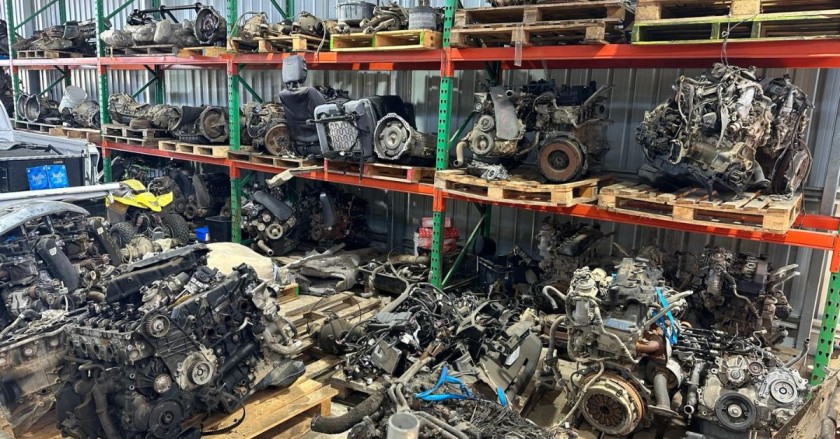Scrap metal recycling is an essential part of the global effort to reduce waste, conserve resources, and promote environmental sustainability. Whether you’re a homeowner with old appliances or a business looking to offload industrial waste, understanding the fundamentals of scrap metal can help you maximise profit while minimising your ecological footprint.
In this comprehensive guide, we’ll break down the different types of scrap metal, how scrap metal pricing works, and the full recycling process—so you can turn trash into cash with confidence.
What Is Scrap Metal?
Scrap metal refers to any discarded metal or metallic material that can be reprocessed and reused. Unlike general waste, metals retain their properties even after repeated recycling, making them one of the most valuable recyclable materials.
Scrap metal is typically divided into two major categories:
- Ferrous Metals – Contain iron (e.g., steel, cast iron).
- Non-Ferrous Metals – Do not contain iron (e.g., copper, aluminum, brass, lead, zinc).
Types of Scrap Metal
1. Ferrous Metals
These metals are magnetic and prone to rust, but they’re still widely recycled due to their strength and durability.
- Steel: Found in appliances, vehicles, construction materials.
- Cast Iron: Often used in bathtubs, radiators, and stoves.
- Wrought Iron: Used in fences, railings, and garden furniture.
Pro Tip: Use a magnet to test for ferrous metal. If it sticks, it’s ferrous.
2. Non-Ferrous Metals
More valuable and resistant to corrosion, non-ferrous metals are in high demand across industries.
- Copper Scrap: Extremely valuable; found in wires, pipes, roofing.
- Aluminum: Lightweight and corrosion-resistant; found in cans, car parts, window frames.
- Brass: A copper-zinc alloy used in fixtures and fittings.
- Lead: Commonly found in car batteries, pipes, and cable sheathing.
- Zinc: Often used for galvanizing other metals to prevent rust.
3. Specialty Metals & Alloys
Some scrap yards accept high-value specialty metals, such as:
- Stainless Steel: Contains chromium and nickel; used in kitchenware and medical tools.
- Titanium: Light and strong, used in aerospace and medical implants.
- Nickel: Found in batteries and industrial tools.
How Scrap Metal Pricing Works
Scrap metal prices fluctuate regularly, influenced by multiple global and local factors:
Factors Affecting Scrap Metal Prices
- Market Demand: High demand = higher prices.
- Metal Type & Purity: Non-ferrous metals fetch higher prices.
- Quantity: Bulk quantities often command better rates.
- Condition: Clean, sorted metals get higher payouts.
- Location: Proximity to a scrapyard or port can impact logistics and cost.
- Global Events: Trade restrictions, fuel prices, and economic trends all play a role.
Current Average Prices (as of mid-2025):
- Copper: $3.50 – $4.25/lb
- Aluminum: $0.60 – $1.10/lb
- Brass: $2.00 – $2.75/lb
- Steel: $100 – $180/ton
(Note: Always check local scrap metal yard listings for real-time pricing.)
The Scrap Metal Recycling Process
Recycling scrap metal involves several key stages that prepare the material for reuse:
1. Collection & Transportation
Scrap is gathered from residential, commercial, or industrial sources. Common collection points include:
- Construction sites
- Auto repair shops
- Manufacturing plants
- Home renovations
2. Sorting & Separation
Metals are sorted manually or with machines. Techniques include:
- Magnetic separation for ferrous metals.
- X-ray fluorescence (XRF) for metal composition analysis.
- Density separation for mixed non-ferrous metals.
3. Shredding & Processing
Once sorted, metals are shredded to smaller pieces. This step:
- Reduces volume for efficient smelting
- Makes it easier to remove impurities
4. Melting & Purification
Each metal is melted in a specialized furnace. Purification methods (e.g., electrolysis, chemical treatments) remove contaminants.
5. Solidifying
Melted metal is poured into molds (e.g., bars, rods) and cooled for solid use. These ingots are then shipped to manufacturers.
6. Manufacturing New Products
Recycled metal is used to create everything from new car parts and construction materials to electronics and packaging.
Benefits of Recycling Scrap Metal
- Environmental Conservation: Saves natural resources and energy.
- Energy Efficiency: Recycling uses up to 95% less energy than mining new metal.
- Economic Value: Reduces production costs and creates jobs.
- Reduces Landfill Waste: Keeps heavy metals and toxic materials out of landfills.
Tips for Making Money with Scrap Metal
- Separate Metals: Clean, sorted scrap fetches a higher price.
- Remove Non-Metal Parts: Take out wood, rubber, or plastic.
- Use a Magnet: Helps you quickly identify ferrous vs. non-ferrous.
- Keep an Eye on Prices: Use apps or websites to track daily rates.
- Build Relationships with Local Yards: You might get loyalty bonuses or better bulk rates.
Common Mistakes to Avoid
- Mixing metal types together
- Ignoring market trends
- Delivering dirty or contaminated scrap
- Not asking for itemized receipts from scrap yards
Conclusion: Turn Waste Into Wealth
Scrap metal recycling isn’t just good for the planet—it can be a surprisingly lucrative venture when done correctly. By understanding the different types of metals, tracking current market prices, and learning how the recycling process works, you’ll be in a strong position to turn your unwanted metal items into meaningful returns.
Whether you’re a homeowner cleaning out the garage or a business managing industrial waste, scrap metal recycling is a win-win for your wallet and the environment.
Want to get started?
Check your local scrap yard for accepted materials and current rates—and start turning your junk into cash today!



